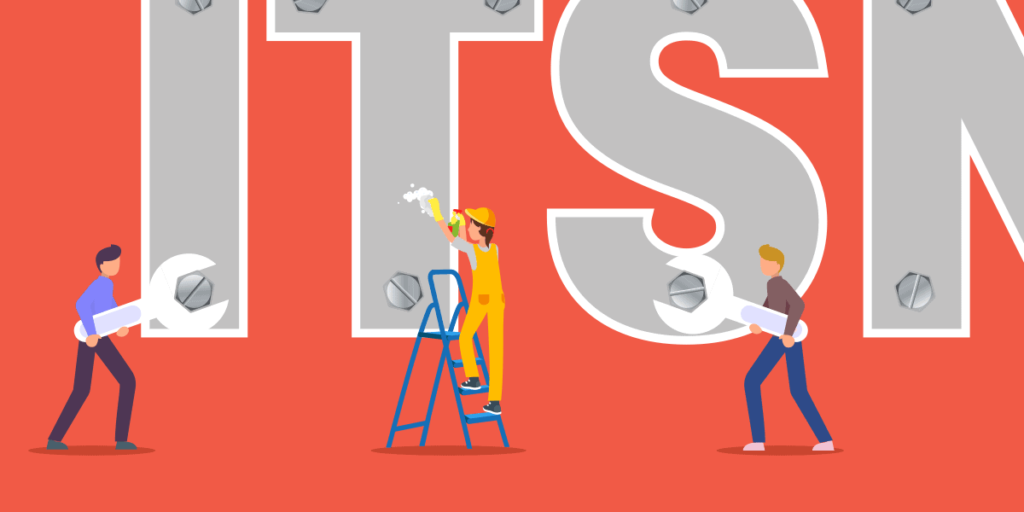Let’s talk about IT service desks. Across every enterprise, IT, Human Resources (HR), Facilities and other service delivery teams are working hard to ensure that the right people, processes, products, and partnerships are in place so that staff can work from home effectively and continue to meet departmental and business objectives. However, if an organization’s break-fix capabilities, and its IT service desks, are not up to scratch, the ability to service both employee and customer demand is significantly impeded.
The right IT service management (ITSM) tool capabilities will help but these won’t fix a broken culture, nor do they provide a cast-iron guarantee that service will improve. However, their adoption does focus attention on existing challenges and specific areas where service can be improved. If done correctly, this creates capacity by reducing, or perhaps even eliminating, low-value interactions that IT service desks should not have to manage.
Please keep reading to understand the four key steps for IT service desks to help drive their organizations out of the global pandemic and into a better 2021.
Take a look at the four key steps that @patb0512 recommends for IT service desks to help drive their organizations out of the global pandemic and into a better 2021. #ITSM #COVID19 Click To Tweet1 – Self-service must be the de facto channel for IT service desks
Let’s face it, self-service is the channel we all prefer to use in our personal lives, and if it’s truly effective, we neither need, nor want, to speak with a person. Our customers unanimously agree – if you want to reduce firefighting, then self-service is the best tool in IT service desks arsenals.
Have you already deployed self-service? If so, have your users widely adopted it? Was it designed primarily to reduce IT costs by deflecting calls away from IT service desks, or to deliver an exceptional service experience? It makes a big difference to your success.
Now is the time to act, but you need to knock it out of the park. Implemented correctly, self-service can eliminate low-value interactions for IT service desks and replace email and phone calls as the primary support channel.
Not yet adopted #selfservice? Or adopted it but poorly? Now is the time to act says @patb0512… and you need to knock it out of the park. #ITSM Click To Tweet2 – Get serious about automation for IT service desks
Traditionally, the expertise, effort, and cost associated with developing and maintaining robotic process automation and integrating the technology with enterprise systems has held organizations back. However, modern service management tools, and those for IT service desks, have made process automation and integration a point and click exercise, which requires no coding or technical skills.
Automation makes teams more efficient and less stressed, as the tool handles low-value, repetitive tasks, leaving IT service desks free to focus on more important work. In addition, there’ll be reductions in costs and errors and an increase in flexibility.
Automation can also add business value that’s visible to employees. For example, if an employee needs software installed urgently, at home, even at the weekend, it can be authorized and deployed with a single click. This makes IT look a whole lot better. It means that you’re not just delivering a service, IT service desks are a partner that works with colleagues, enabling them to work as effectively as they can.
2021 is the year that you MUST get serious about #automation, says @patb0512 #ITSM Click To Tweet3 – Demonstrate value by getting out of your silo with enterprise service management
Think about the potential current inconsistency between, and the inefficiencies of, the various business functions within your organization (and relative to IT service desks). Employees engage daily with a multitude of services delivered by different business units. When accessing these services, staff are forced through separate channels, and must contend with the inefficiencies of siloed working practices. Disjointed processes, disparate systems, and the reliance on email, spreadsheets, or home-grown applications, means that employees have no visibility of the progress of their requests. As a result, service delivery teams are swamped with unnecessary calls and low-value interactions, and employees suffer through lost productivity and a poor service experience.
Thankfully, progressive IT teams have brought colleagues from HR, Facilities, Legal, and other service delivery teams into the light and given them complete ownership to fully automate and integrate their workflows without on-going IT involvement. This Enterprise Service Management (ESM) approach is the application of ITSM concepts and practices in other business areas, outside of IT. In particular, those of IT service desks.
In 2021 you need to demonstrate value by getting out of your silo with enterprise service management says @patb0512. #ITSM #ESM Click To Tweet4 – Lead: You have to own IT and its exploitation
Businesses everywhere, public and private, small and large, are transforming. Digital is the enabler, but this is business transformation, which includes business models, infrastructure, processes, partner and supplier eco-systems, culture, employee and customer experiences, and so much more including line-of-business and IT service desks.
There’s never been more of an opportunity for IT and IT service desks to drive change within organizations. But to be honest, IT has no option but to be the change leader. Research from McKinsey in their paper “IT’s Future Value Proposition” highlights the risk of not leading. This highlighted that more than four in ten executives believe IT is either significantly or fully replaceable by third parties. This is in stark contrast to the views of IT leaders with an 80% difference of opinion.
There's never been more of an opportunity for IT to drive change within organizations. But to be honest, IT has no option but to be the change leader – @patb0512 #ITSM #leadership Click To TweetSo, IT departments need to lead. Ensuring that the technologies they invest in can drive automation and integration to find simpler and faster ways to make life at work better. The old practices of IT service desks relying on IT gurus who tinker with tools, and revel in their complexity, is a luxury that their businesses can no longer fund.
If you’d like to find out more about the above steps, more detail can be found in our downloadable paper “The Definitive Guide to Service Challenges in 2021 for the UK Public Sector.” Or, if you have any questions or opinions related to IT service desks, please use the comments section below.
If you liked this IT service desks article, do you want to read more on IT service desks?
Patrick Bolger
Patrick Bolger, Hornbill’s Chief Evangelist, is an active contributor to strategic groups and partnerships that influence the service management industry. An industry veteran, with first-hand experience of the issues facing IT, Patrick is a recognised authority in the service management arena and a compelling and popular speaker at events worldwide.

